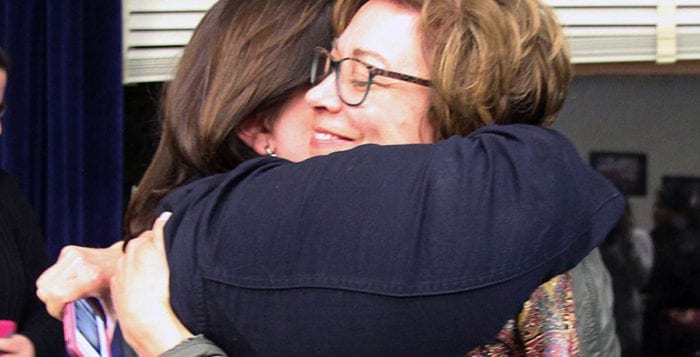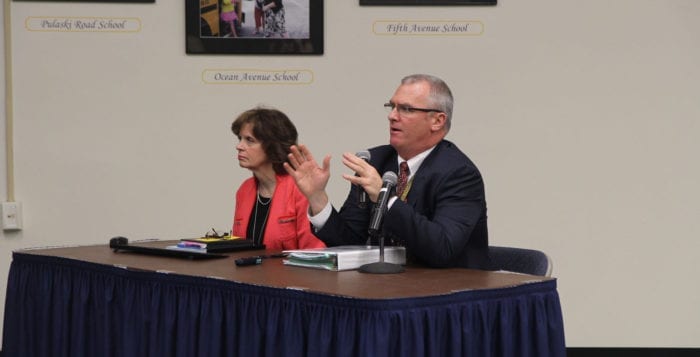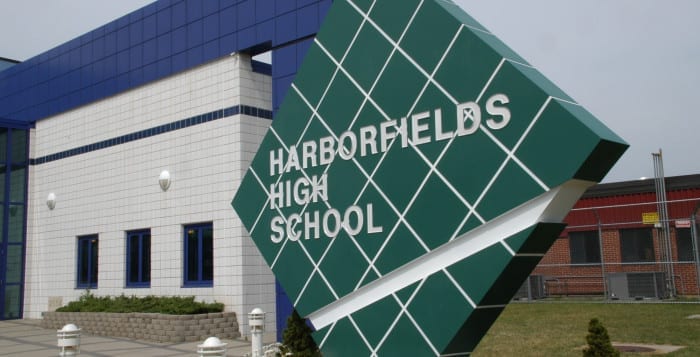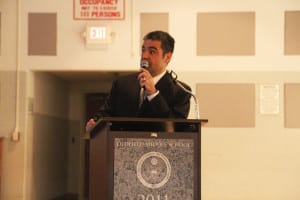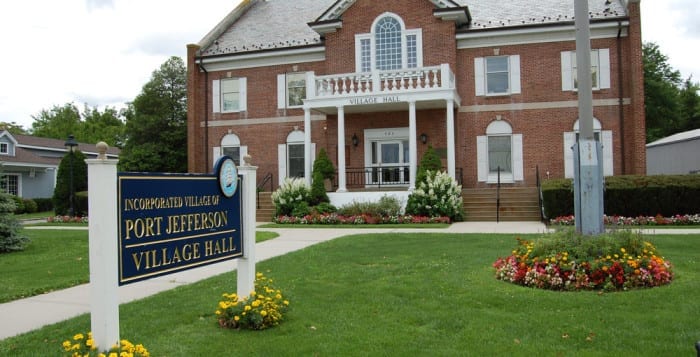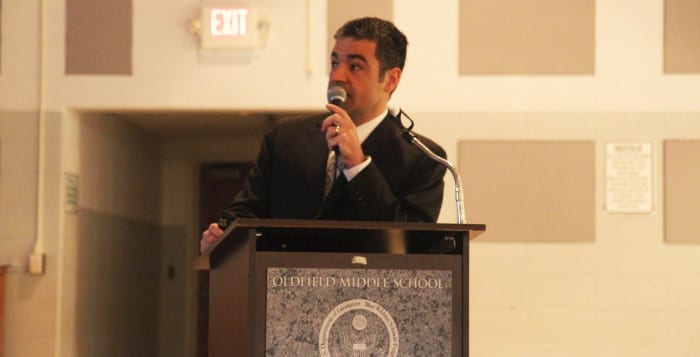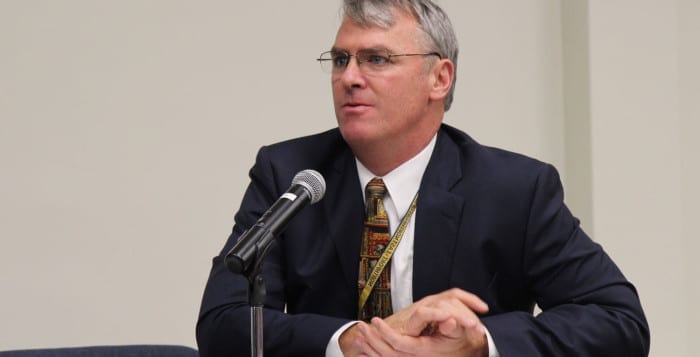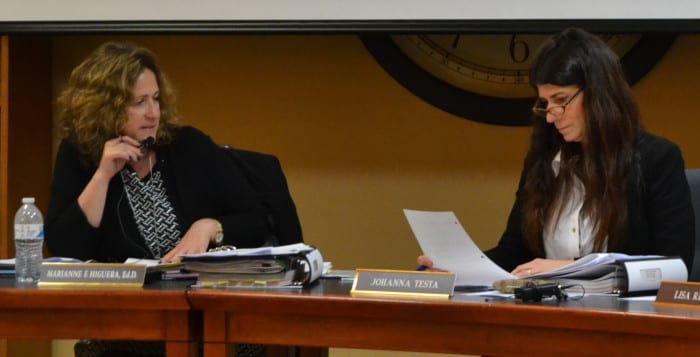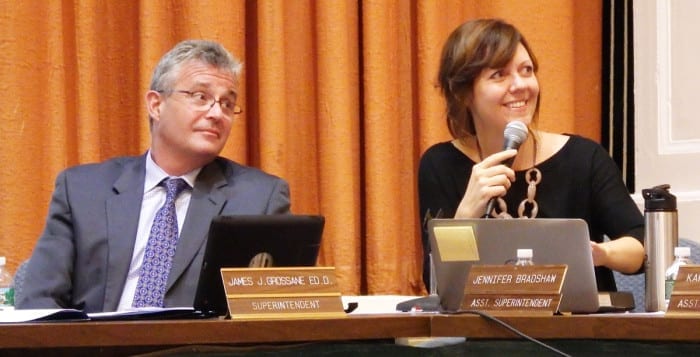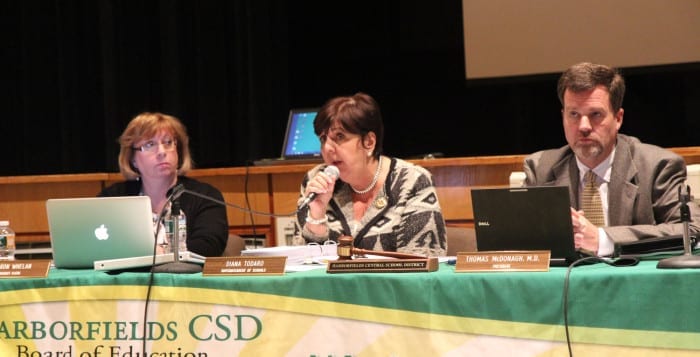By Victoria Espinoza
In the Northport-East Northport school district, change is coming.
Residents approved a $161 million budget on Tuesday night with 2,568 votes in favor to 687 against, ousted an incumbent from the school board and reduced the number of board of education members from nine to seven. The district clerk’s office said the latter change will go into effect next year. Trustees Regina Pisacani, Donna McNaughton and Jennifer Thompson will all be up for re-election next year, but only one of their three seats will be open.

Northport’s budget stayed within the 0.55 percent tax levy cap, and a separate proposition for $2 million in capital improvements, which was approved with 2,848 to 390 votes, will include many athletic facility upgrades for the coming year, including a new gym ceiling and field repairs.
Board President Andrew Rapiejko did not support the reduction in board members.
“It was not a board-supported proposition,” he said. “I think nine members is more representation. It’s a very large district and if you look at even right now, we just have one board member who’s from East Northport out of nine people.”
Armand D’Accordo, a member of the United Taxpayers of Northport-East Northport, the group that introduced the idea for a smaller board, said he was pleased with the results.
“Clearly the nine-person board was not getting the job done,” he said. “Now we have an opportunity to break up the majority of incumbents that have been on the board for too long and get more independent and objective members. Most importantly, fewer members will provide more effective governance over the district and improve academic outcomes.”
Rapiejko and Trustee Lori McCue were both voted in for another term with 1,984 votes and 1,560 votes, respectively.
“I’m very grateful for the people who came out and supported me,” McCue said. She looks forward to finishing an energy performance contract with the district that aims to make it more energy-efficient.
Northport resident Allison Noonan came in first for the night, with 2,039 votes, and said she felt grateful and humbled by the results, and is excited to add a fresh voice and a fresh perspective to the board.
Incumbent Julia Binger came in fourth 1,543 votes and Shawne Albero collected 1,410 votes, so both fell shy in their bids for the board.

